IMPROVE MY GAME
Articles
Be Like Mike: How Mike Weir is Improving His Physical Capabilities in his 40's
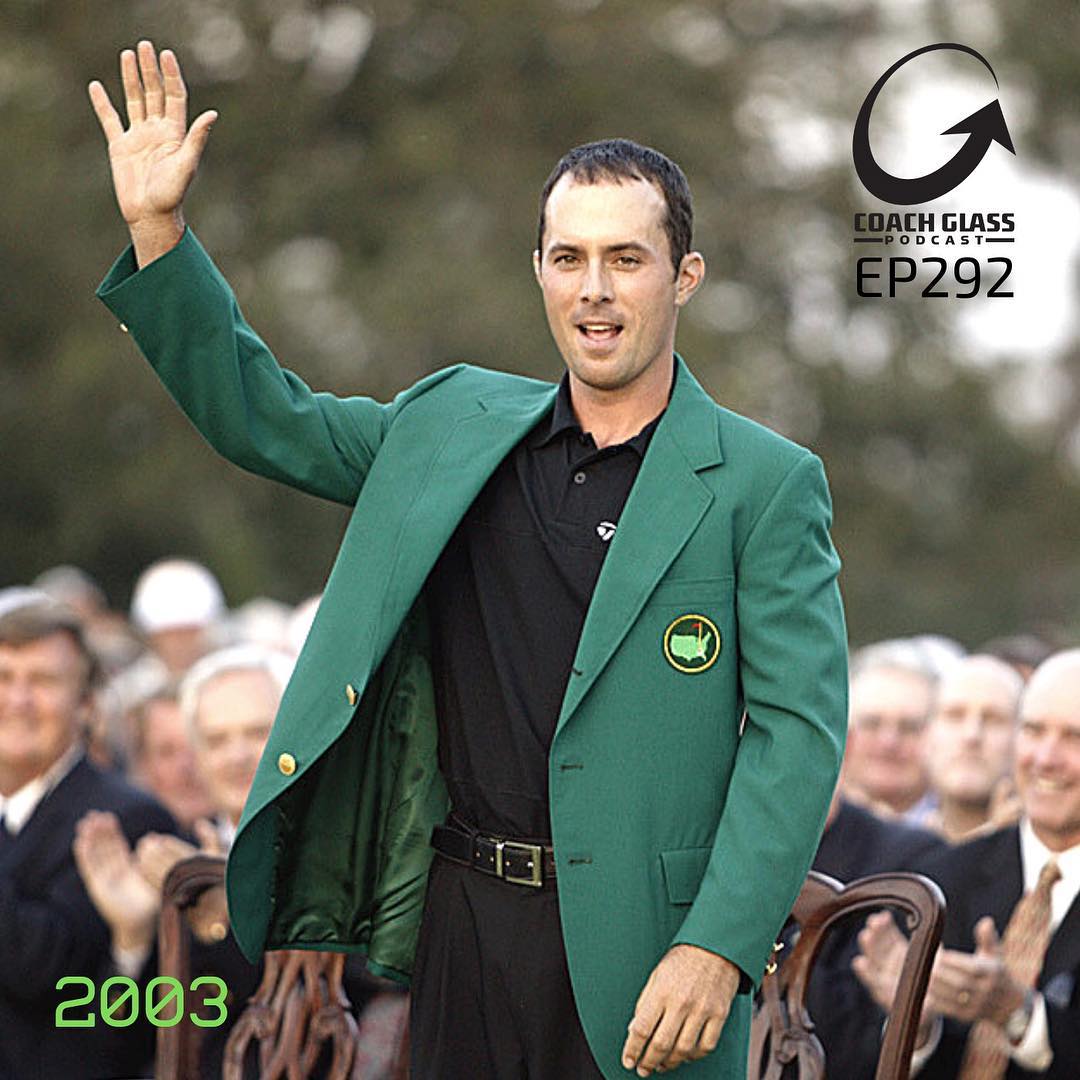
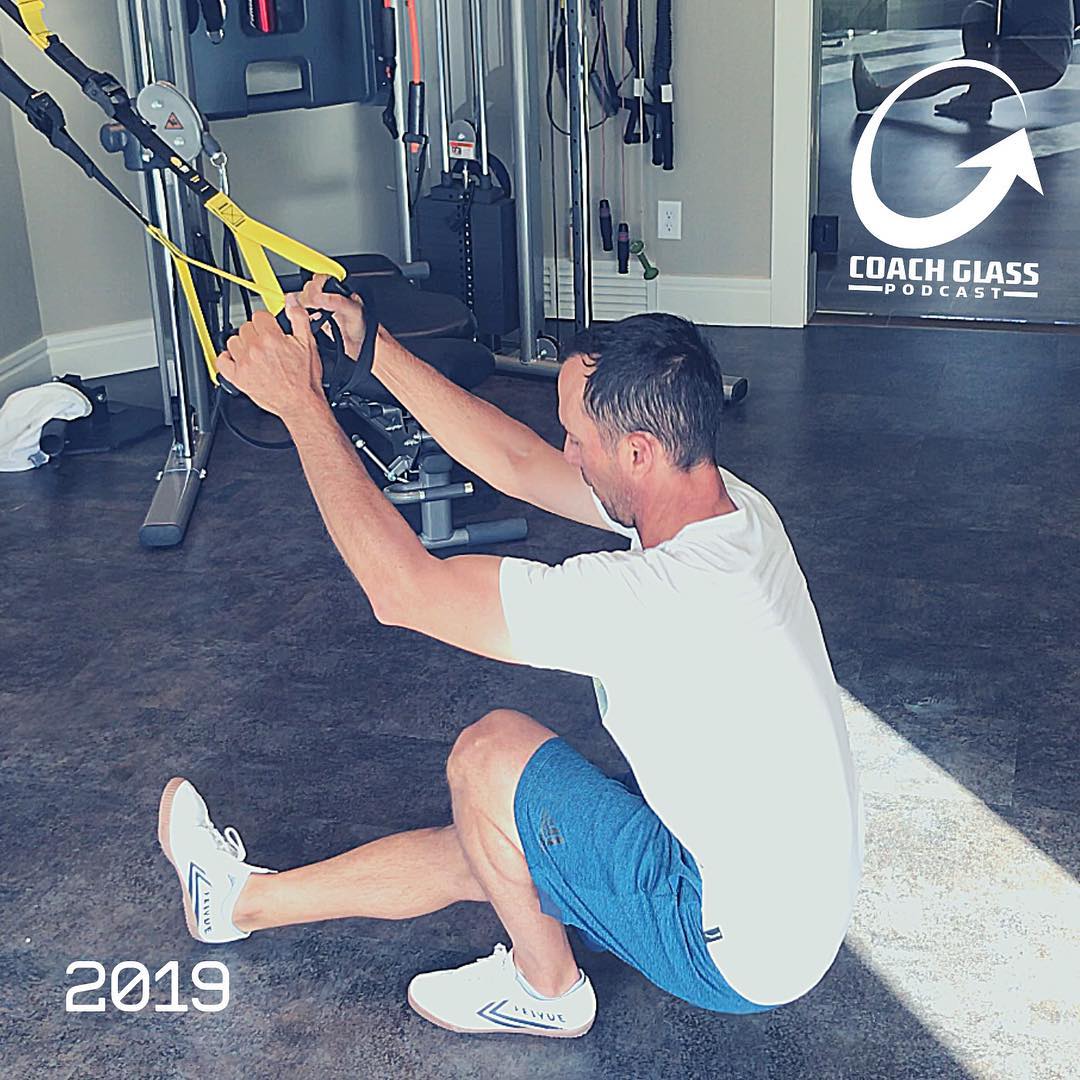
2003 Masters Champion Mike Weir joined the Jason Glass's podcast to their work as a team, training considerations for an athlete in their 40's and the journey that Weir has been on the last few years. You can listen on Jason's site, iTunes or in the media player below.
If you are over the age of 45 it is time to switch up your performance plan! What you did in your 20’s and 30’s was great but if you want to optimize your body for golf past 45 you need a different approach. I am not talking about taking the foot off the pedal. In fact, I am doing the exact opposite with my personal program and the programs I build for my athletes. I have had the opportunity to work with Mike Weir with my teammate Mark Blackburn over the past year. Mike is 49 and less than a year away from playing on the Seniors Tour. But don't think for a second that the relentless training and swing changes he is grinding out each day is motivated by the seniors tour. This Masters Champ wants another Major under his belt plus a win or two on the PGA TOUR! I want to share with you how you can ‘Be like Mike’ and learn from a someone who knows what it takes to be the best and now has a plan to rise again on the PGA TOUR.
The first thing we did with Mike after discussing his current goals and reviewing his previous programs was perform the TPI Level 1 screen and Fitness Level 2/3 strength and power tests. This is a critical step to not only determine what his needs are but also give us a baseline to compare our progress from. For obvious reasons I am unable to share his specific results, but I will generalize the key elements that I feel will resonate with the majority of athletes or coaches reading this article. The following are the key areas that we address not only for Mike but any athlete who is on the backside of 45. That includes me, by the way, who applies these strategies on a daily basis to maximize my own performance.
Posture
Many coaches overlook bad posture in their younger athletes which leads to postural abnormalities and compensatory movement patterns later in life. The problem is, these postural issues and compensations at 45 have had decades and years to become deeply ingrained. The longer you have lived with one shoulder higher than the other, rounded shoulders, C-Posture, S-Posture or structural asymmetries, the harder it is to correct them. For most of us, we struggle with C-Posture and rounded shoulders as we age. This posture forces the scapula to migrate forward and elevate toward our ears. The instability of the scapulas leads to limitations in our Lat Tests, 90/90 and T-Spine Rotation screens. So which one do we work on? All of them! I want to stretch the lats using a Side Bend Childs Pose stretch while focussing on breathing into our stretching side ribs. Sombrero Wall Slides and Externally Rotated Pistols Drill help open up the chest and activate the scapular retractors. If you want to strengthen the back muscles you need to release the frontside first. My medical team can perform some ART (Active Release Therapy) or other soft tissue strategies to release the tight pectorals and we reinforce the newly positioned shoulder girdle with back exercises.
Sombrero Wall Slides
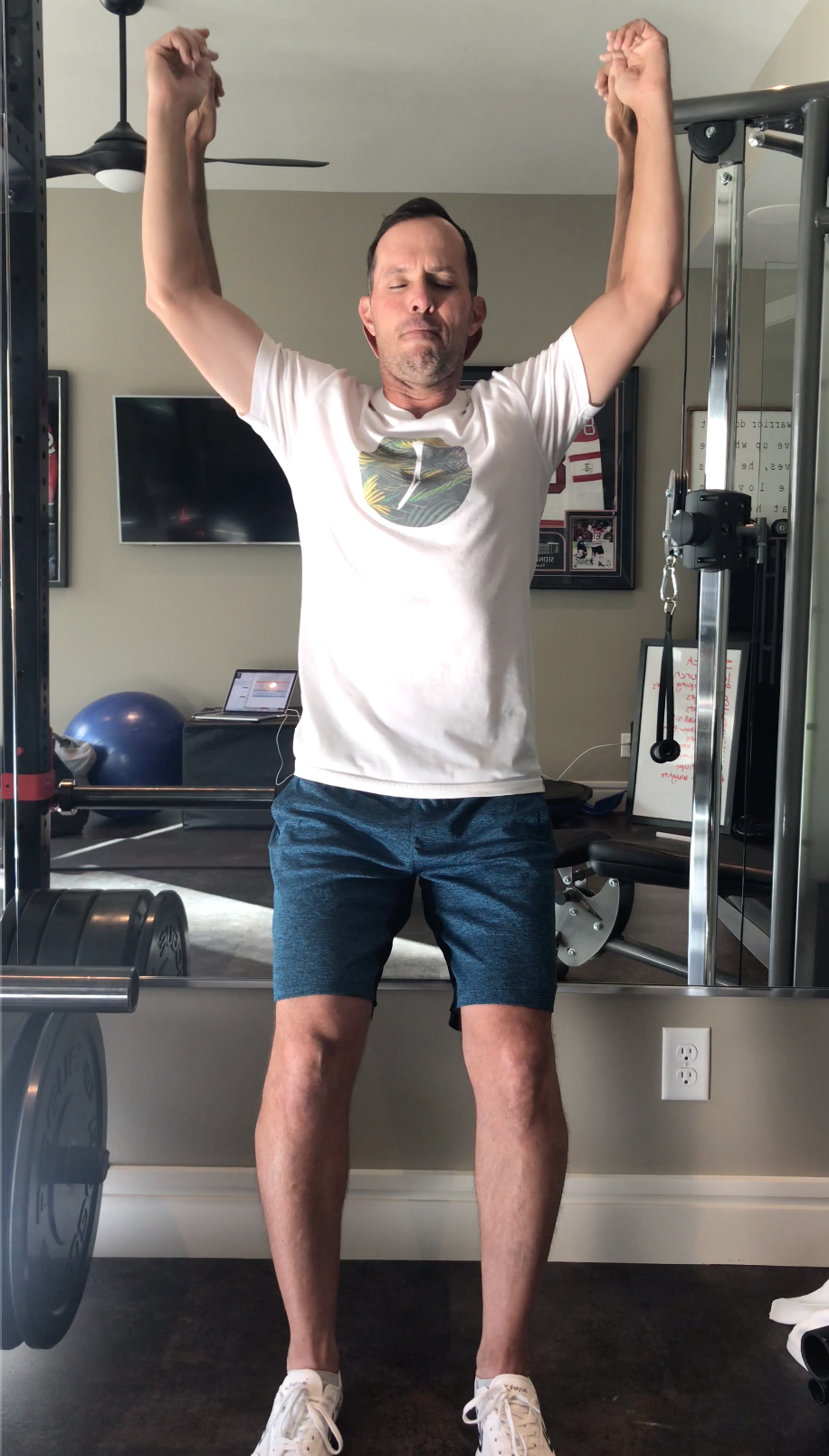
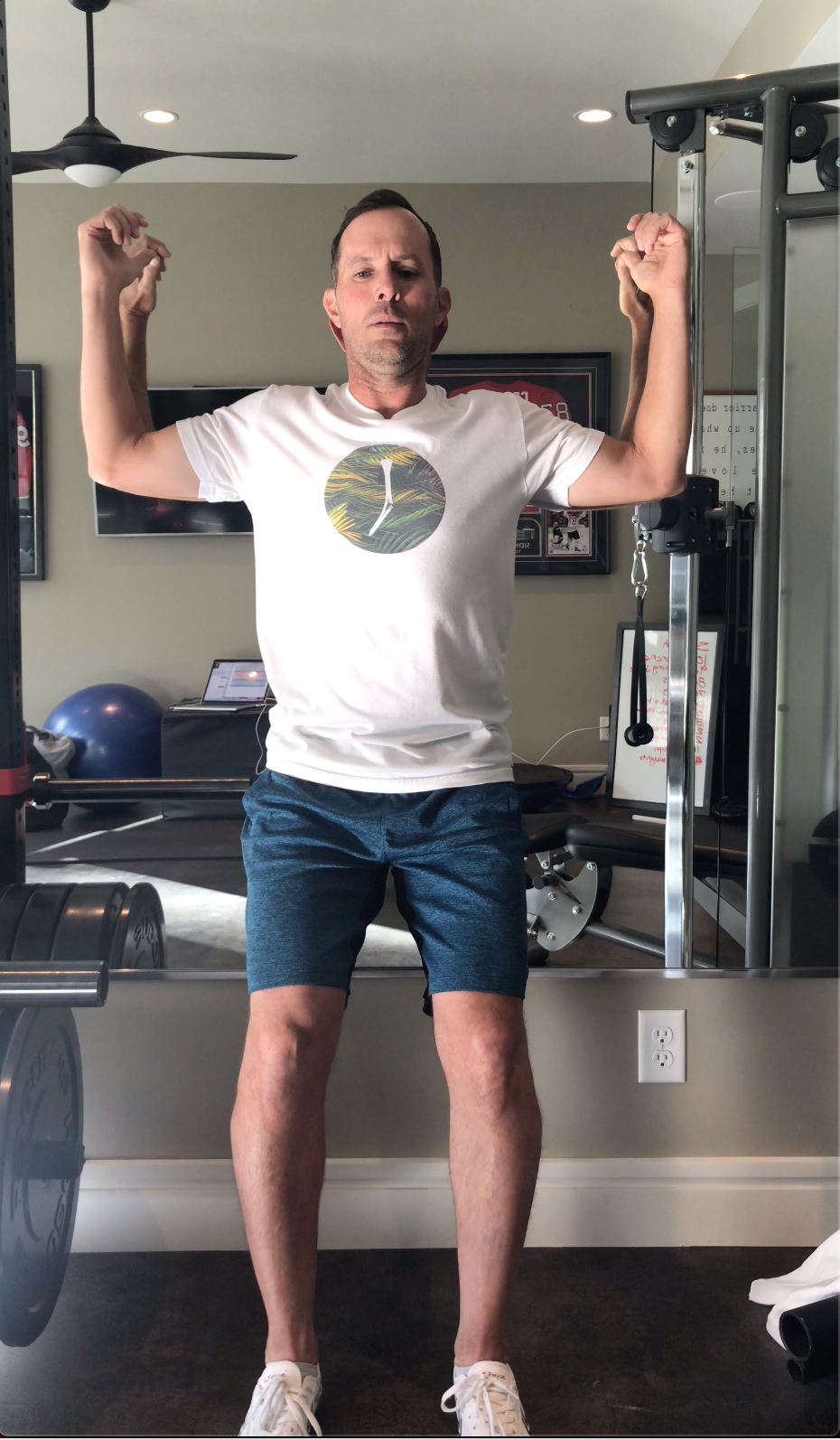
Recovery Strategies
In my interview with Mike on the Coach Glass Podcast Episode 292 we go DEEP into his recovery techniques. Both Mike and I use sauna and cold plunges to fire up our endocrine (hormone) systems, improve circulation, reduce inflammation, enhance cardiovascular power, improve heat dissipation and cut a mental toughness groove in our minds. I perform a combo of weight training and yoga in a 105 degree sauna followed by a cold shower 4 days a week. Mike trains in his home gym and uses sauna and cold plunge before bed to enhance deep sleep. You can use these tools to either challenge your physical resiliency or for their recovery benefits. The other aspect of recovery that both Mike and I geek out on is hydration and nutrition. Eating clean and staying hydrated is a priority. Whether you are paleo, vegan or eat whatever is in front of you, make sure your food comes from a good source, is as unprocessed as possible and makes you feel fantastic after you eat it! TPI Advisory board member, superstar nutritional expert and author, Robert Yang, recommends you drink 1/2 your body weight in ounces per day. So if you weigh 200lbs you need to drink a minimum of 100oz a day. Add a pinch of celtic sea salt to mineralize your water and provide you with essential electrolytes. If you want more info about nutrion and hydration for golf, read Yang’s book ‘Hole In One Nutriton’.
Training Frequency
Regardless of your age I believe you should train every day! As you age the type of training changes but taking days off is not an option. At 45 I feel you should be doing 2-3 mobility based sessions, 3 sessions that elevate your heart rate over 120 bpm for 20+ minutes and 2-3 strength training sessions a week. The rest of week you should be doing something that gets you moving but doesn’t require excessive cardiovascular load or sweating. How about go play golf, go for a walk in the woods or if you struggle off the tee you may combine these activities! I try to incorporate as many elements as possible in my week but I will always fit in 3 days of yoga, a short run in the woods, 1 long run and 2-3 sessions of complex full body workouts. My LoadXplode 16 week online training program takes all the guessing out of your performance plan and checks off all the boxes listed above in a fun follow along video based golf training program.
As you move into your late 50’s and 60’s you need to maintain your muscle mass. Keep lifting those weights! Short bouts of weight training followed by long bouts of mobility work will keep your muscles hard, bones dense and heart kicking! The older we get the more important our joint health and posture become. Dont wait till you are 80 to start training T-Spine Extension. Start NOW!
Training Philosophy
Every golfer, regardless of age wants more speed to hit the ball farther. My philosophy is that building a more efficient and more athletic golfer yields more speed than pure strength. My program for Mike, and all my golfers for that matter, are based on adding complexity as we progress versus increasing the resistance. I call it High Triplexity training as we build upon basic movement patterns and couple them together until we have an athlete that can move in all planes of motion, using different types of contractions over multiple segments of the body. When you combine all these together you create a robust neuromuscular system that can perform incredibly power, efficient, accurate and repeatable movement patterns. A great example of a High Triplexity exercise is the TRX Single Leg Deadlift to Pistol. You can lift weights till the cows come home but if you can’t move your body athletically it was unfortunately all for not! Weir is an incredible athlete who is able to control his body in multiple planes using multi jointed movement patterns under a variety of different types of load. In my interview with him he describes what this type of neuromuscular training feels like and we discuss how we integrate it into our programs.
I hope this article and attached podcast episode shed some light into what it takes to be a Master of your own game past 45!
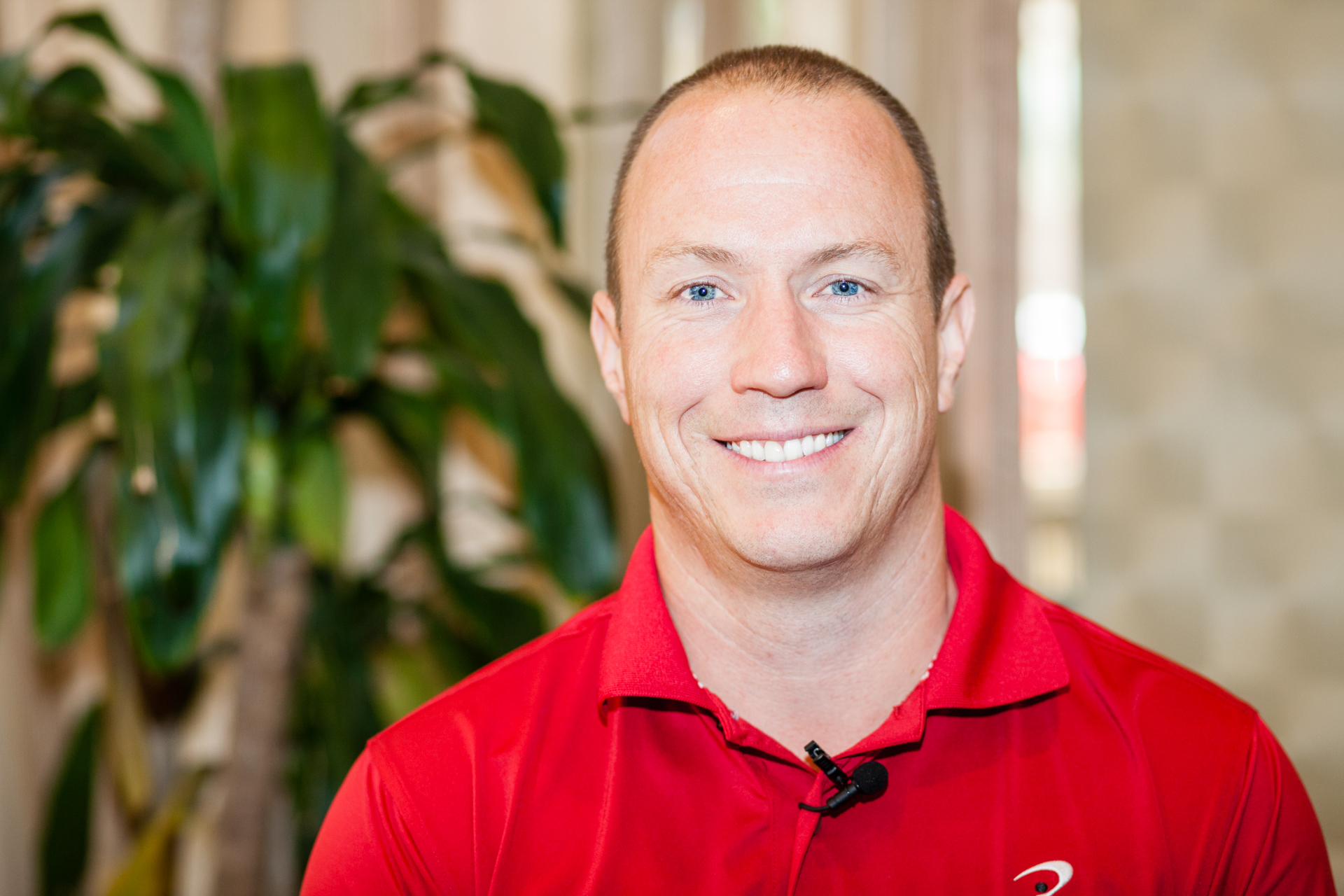
Jason Glass BHK, CSCS, TPI Advisory Board @jasonglasslab Host of the Coach Glass Podcast on iTunes Website: http://www.jasonglassperformancelab.com/
I hope this article and attached podcast episode shed some light into what it takes to be a Master of your own game past 45!